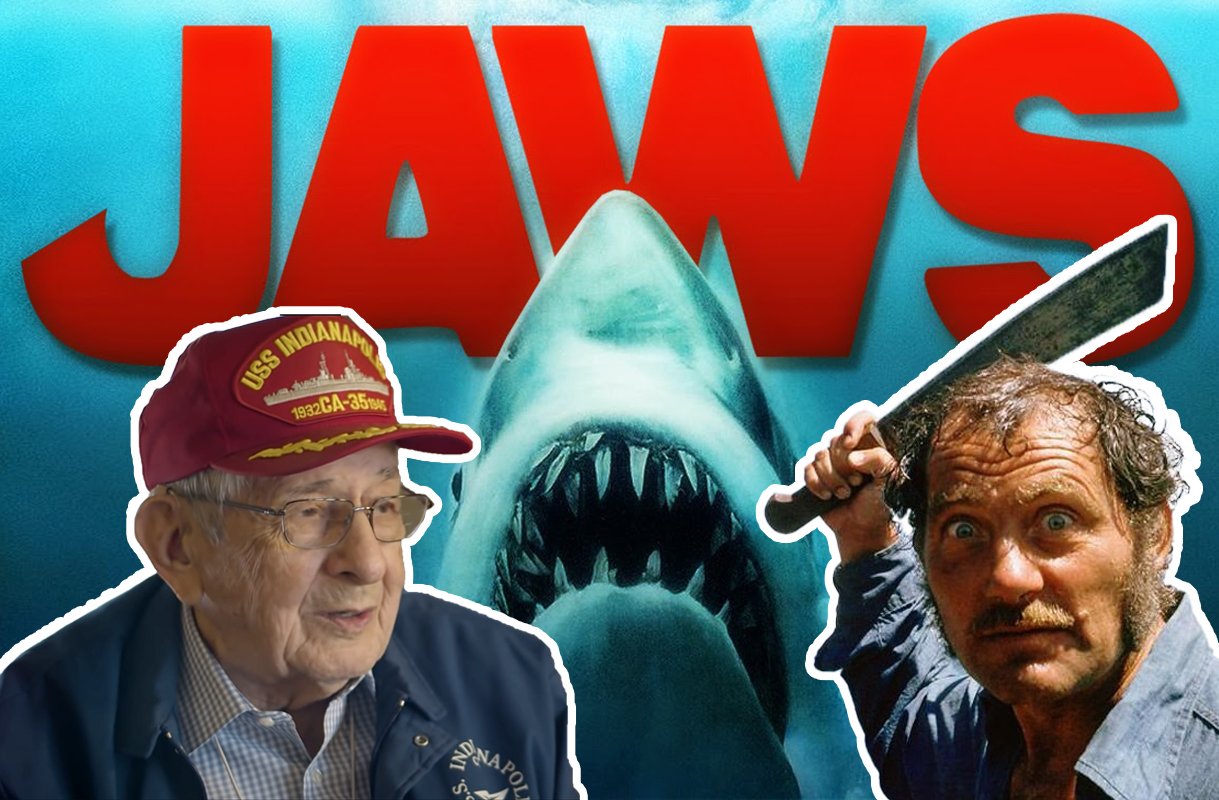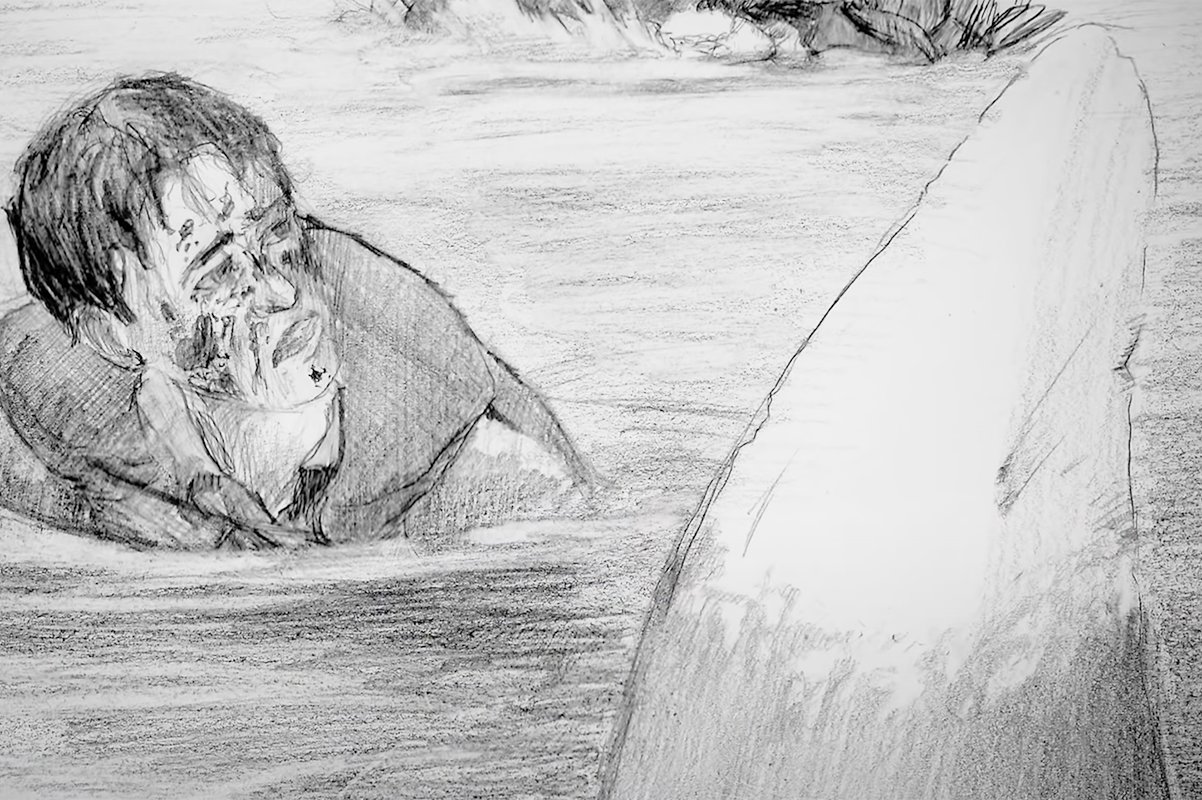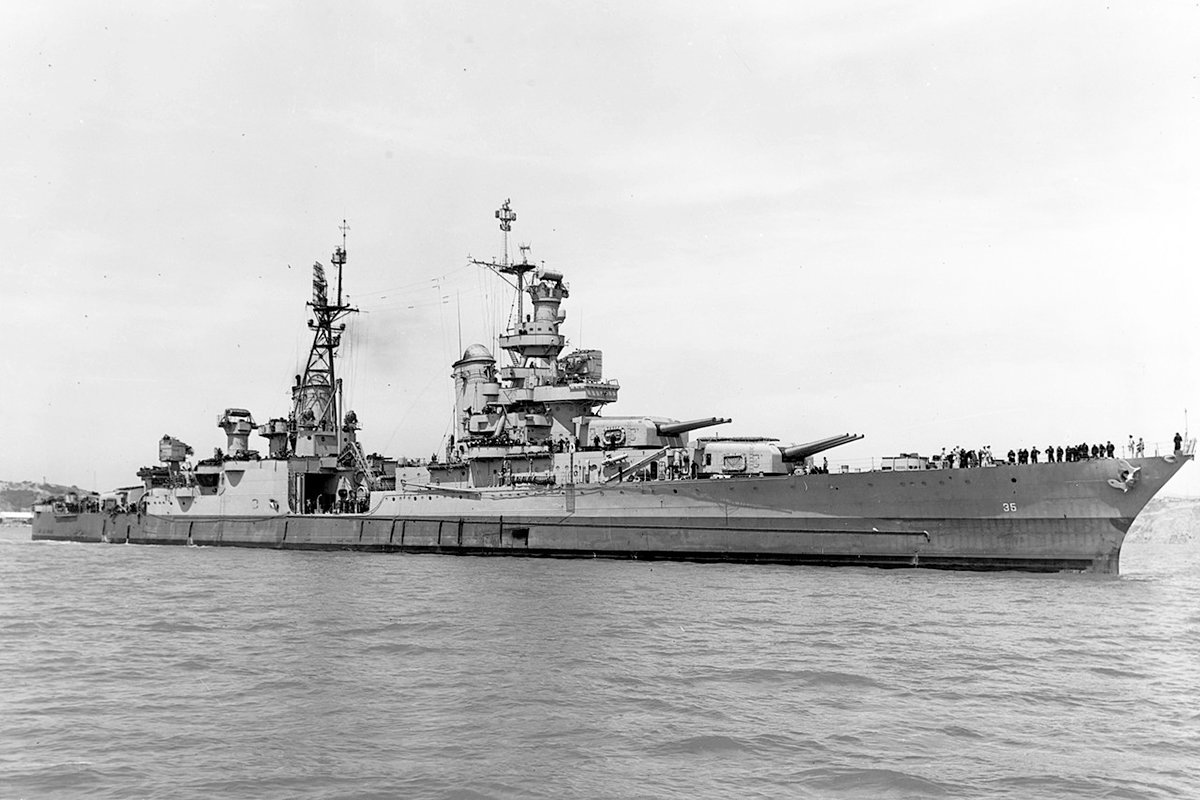‘The Sharks Took the Rest’ — WWII Marine Tells True Tale of ‘Jaws’ Horror Story

A World War II Marine veteran recounts the horrifying true story behind Quint’s memorable monologue from Jaws. Composite by Coffee or Die Magazine.
“Eleven-hundred men went into the water; 316 men came out. The sharks took the rest.” Robert Shaw utters that line toward the end of his haunting monologue — one of the best movie moments of the last 50 years — in Steven Spielberg’s 1975 horror classic, Jaws. Portraying legendary shark hunter Quint, Shaw recounts the tragic horror that befell US sailors after a Japanese submarine torpedoed and sank the USS Indianapolis just after midnight on July 30, 1945.
Often regarded as one of the greatest movies ever made, Jaws became the first real blockbuster when it surpassed $100 million at the box office. With groundbreaking special effects, ingenious use of point-of-view camera shots, and a notoriously finicky mechanical shark named Bruce, Jaws still manages to make beachgoers wary of circling fins. But the story Quint tells his Jaws-hunting colleagues as they float on the open ocean is even more horrifying because it’s true.

In a recent video uploaded to YouTube by Memoirs of WWII, Marine Cpl. Edgar Harrell recounts the real tale of the USS Indianapolis and the suffering its crew endured as they floated helplessly in the open ocean for days as swarms of sharks fed on survivors.
In 1945, Harrell was serving aboard the Indianapolis when two Japanese torpedoes slammed into it. In just 12 minutes, the Portland-class Heavy Cruiser rolled over and sank to the bottom of the Pacific Ocean. The attack occurred after the USS Indianapolis carried out the top-secret mission of delivering the first nuclear bomb to Tinian, so no one knew of the ship’s whereabouts when it sank, delaying a rescue for nearly five days.
In the roughly 20-minute video, Harrell describes the terror of seeing his flash-burned shipmates go into the black, oil-coated water. The tragedy deepened when a wounded Marine died in Harrell’s arms soon after the ship sank, but Harrell’s nightmare devolved to unimaginable depths when the sun rose the next morning.
“You could look out at any time, and you would see a big fin swimming around and around,” Harrell says in the video. “You’re kind of in their road, and they go through and don’t bother to miss you. They hit you, and that’s the end of you. You would see someone out by himself; you would hear a blood-curdling scream, and you would look and see him go under with two or three sharks there.”

The 96-year-old Marine describes the desperate need for potable water, finding food in the form of a crate of rotten potatoes, and how a US Navy amphibious aircraft finally found and rescued the survivors.
Of the 1,195 men aboard the USS Indianapolis, Harrell was one of only 316 survivors. Several hundred men went down with the ship when it sank, and hundreds more died from dehydration, exposure, saltwater poisoning, and, of course, shark attacks.
Harrell continued to share his remarkable story of the deadliest shark attack ever recorded until his death in May of 2021. His experiences aboard the USS Indianapolis and at sea are preserved in his book Out of the Depths: An Unforgettable WWII Story of Survival, Courage, and the Sinking of the USS Indianapolis. Watch the entire video above.
Read Next:

Mac Caltrider is a senior staff writer for Coffee or Die Magazine. He served in the US Marine Corps and is a former police officer. Caltrider earned his bachelor’s degree in history and now reads anything he can get his hands on. He is also the creator of Pipes & Pages, a site intended to increase readership among enlisted troops. Caltrider spends most of his time reading, writing, and waging a one-man war against premature hair loss.
BRCC and Bad Moon Print Press team up for an exclusive, limited-edition T-shirt design!
BRCC partners with Team Room Design for an exclusive T-shirt release!
Thirty Seconds Out has partnered with BRCC for an exclusive shirt design invoking the God of Winter.
Lucas O'Hara of Grizzly Forge has teamed up with BRCC for a badass, exclusive Shirt Club T-shirt design featuring his most popular knife and tiomahawk.
Coffee or Die sits down with one of the graphic designers behind Black Rifle Coffee's signature look and vibe.
Biden will award the Medal of Honor to a Vietnam War Army helicopter pilot who risked his life to save a reconnaissance team from almost certain death.
Ever wonder how much Jack Mandaville would f*ck sh*t up if he went back in time? The American Revolution didn't even see him coming.
A nearly 200-year-old West Point time capsule that at first appeared to yield little more than dust contains hidden treasure, the US Military Academy said.












